- review: Arc’Teryx Gamma lightweight jacket – what OutdoorGearLab doesn’t tell you - October 22, 2025
- Has AI killed it all? The future of this website & my projects - October 12, 2025
- Review: Lono Wild – Best budget barefoot hiking shoes around? - April 30, 2025
No preamble, here’s my honest take and review of the Xero Scrambler Trail Mid II WP .
For reference, I’m a ‘high-performance’ athlete – I hike, climb, bike, paraglide, freedive – so I care a lot about my gear, and especially footwear.
I will cover comfort, build quality, performance, durability, aesthetics, and more in this review.
As Xero markets these as an “Ultralight Waterproof Hiking Boot”, they’ll be judged as such, and compared to my Vivobarefoot Magna Lite WR SG – a mid-cut hiking boot. At $189 they’re a good sum cheaper than the Vivo offering (at $220), so lets see how they do.
Check out my ultimate Xero shoes buyers guide to help you compare models!
Table of Contents
Comfort
Evidently one of the most important things – how do they feel, and can they be worn for a whole week without bother?
And just like their smaller brothers, the Xero Scrambler Low EV, the Scrambler Trail Mid has a significantly stiffer sole and overall construction than comparable barefoot boots. Also, for better and for worse.
For better, they give more structure and familiarity than barefoot shoes typically do – that’s especially nice if you prefer a more ‘strong’ boot feeling, and don’t want to feel each root and rock under your foot.
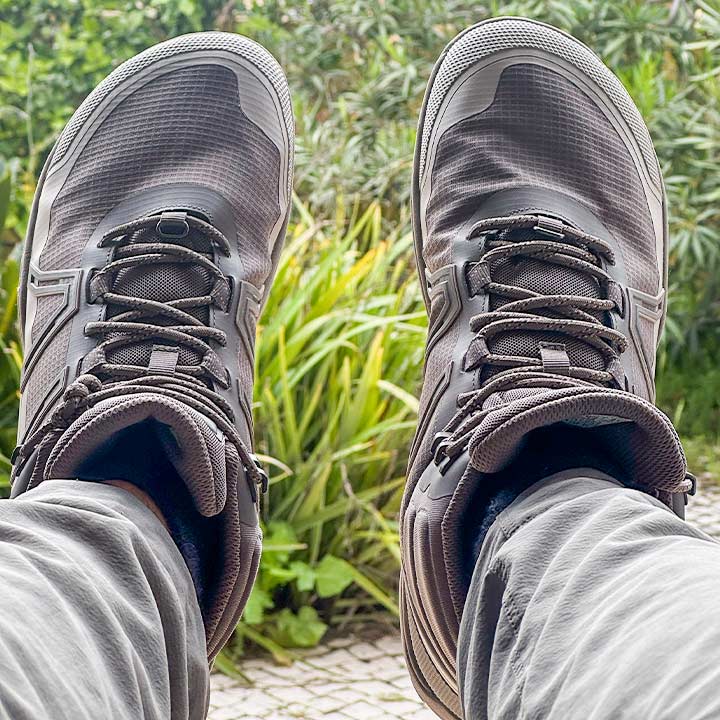

Consequently, the barefoot sensation, feedback, and flexibility is dramatically reduced. For someone like me who even walks completely barefoot on gravel, I do miss that barefoot sensation – however I recognise some people get figured from the rocks and texture under their soles, so they might actually prefer this.
Aside from that, I found they need have a slight break-in period. No blisters for me, but to soften up they need a couple weeks of time. They don’t have that supple, soft feeling that leather & wool shoes or traditional fabric shoes do, but they’re still far from that clunky, soggy feeling that typical hiking boots give you.
I’d say they’re a great middle ground for those looking for more ‘support’ and structure than typical barefoot shoes, especially for those transitioning to barefoot and looking for their first barefoot shoe.


Performance
That Michelin Fiberlite sole is a good pick for this shoe as the grip is certainly great! The strong structure of the shoe inspires confidence, and the general sensation they give you is robust and trustworthy. They also have kept my foot bone-dry in otherwise nasty rain.


Xero says they’re ‘breathable’, but anyone familiar with waterproof materials will clearly tell you that breathable and waterproof is an oxymoron.
Yes, they did excellent at the waterproof aspect, but they will not ventilate at all in say mid-summer hiking. You foot will get warm and sweaty, trust me. You’re way better off with the openly-ventilated Scrambler Low EV.
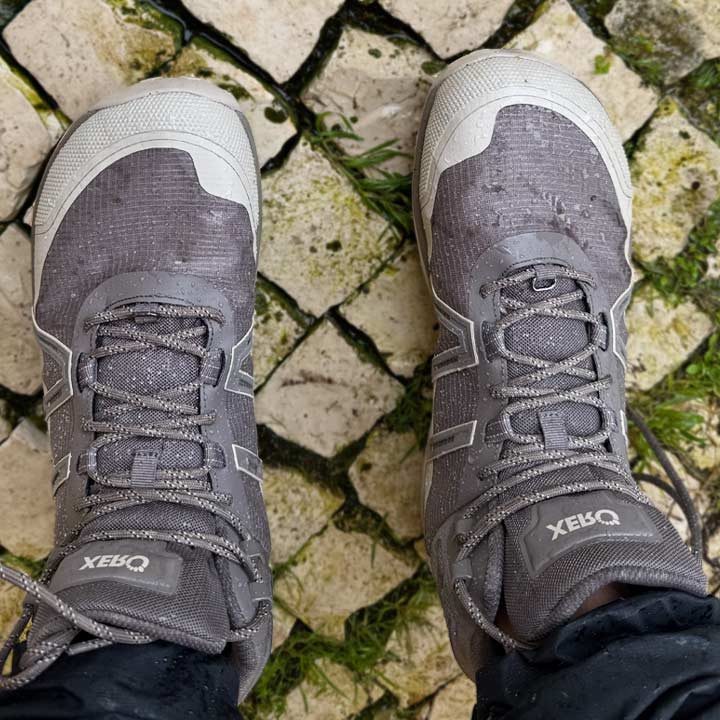

Therefor, these are better suited to Fall-Winter-Spring conditions where it’s between -5 – 15°C maximum, overcast, maybe rainy, maybe muddy, maybe snowy.
If you want to double up on rain or rock protection, then the built-in gaiter hook at the front of the lacing will allow you to easily hook a trail gaiter on – super useful when scrambling and you want to prevent rocks from entering from the ankle or give you a second layer of rain protection.
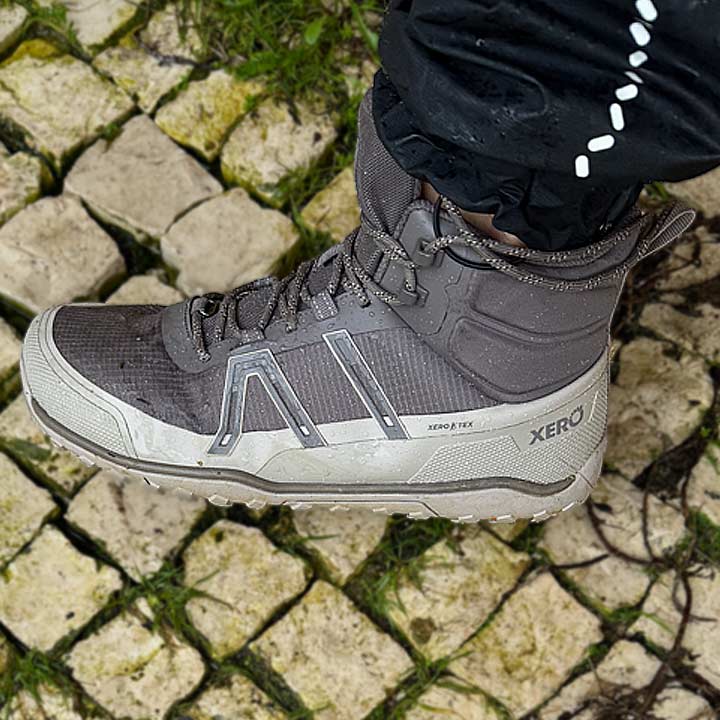

So overall they perform great and I am confident taking these in pretty much any condition that isn’t summer sunlight!


Durability
I’ve not had them long enough to comment on long-term durability, however my experience with Xero shoes is that they’re quite robust and generally longer-lasting than equal Vivobarefoot offerings.
Though the sole is glued-on and not sewn-through, so we’ll see if any problems arise from that.
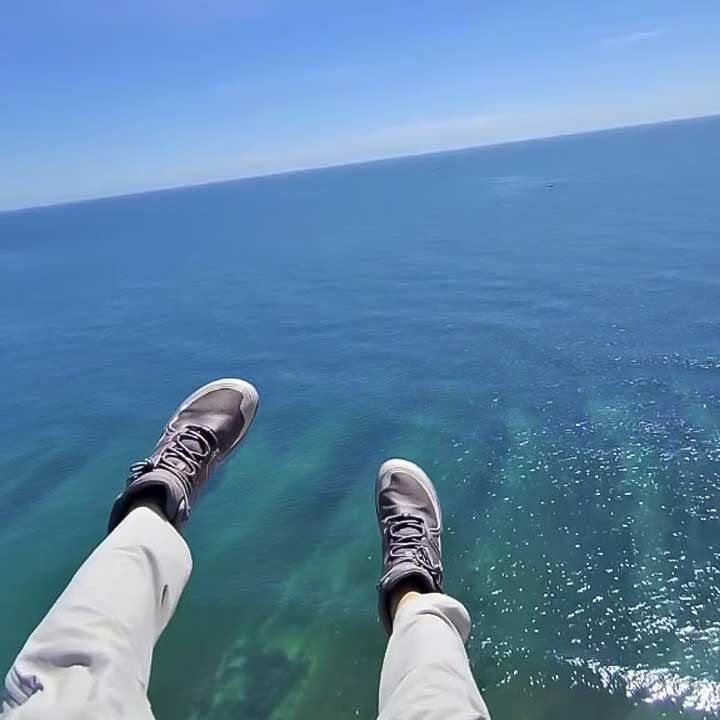

The material choice and selection is quality and I wouldn’t be surprised to see these last multiple seasons – of course I’ll have to update this as time goes on.


Build quality
One thing that’s remained consistent for me over the years is that Xero makes durable, long-lasting shoes. In my experience, they tend to outlast Vivobarefoot options, which can save you money in the long run.
They weigh about 425 grams in size 11.5 US, which, is heavier than the equivalent Vivobarefoot model at 324 grams and the Scrambler Low EV at 309 grams. In real world use – they still feel quite lightweight compared to conventional hiking boots, but ‘ultralight’ is a bit of a stretch.


That said, they don’t quite have the same premium feel. There’s something about the construction and overall finish that feels a notch below Vivobarefoot’s craftsmanship and use of high-quality materials – this is notable in the lacing and inside materials.
To be clear, Xero shoes are well-made — no doubt about it — but they don’t quite reach the refined, high-end feel that Vivos offer. Whether it’s the texture, design, or overall aesthetics, Vivos just seem more polished.
One highlight for Xero, though, is that Michelin Fiberlite sole — it’s definitely a premium one. If it were sewn on rather than glued, I think it would elevate the build quality even more.
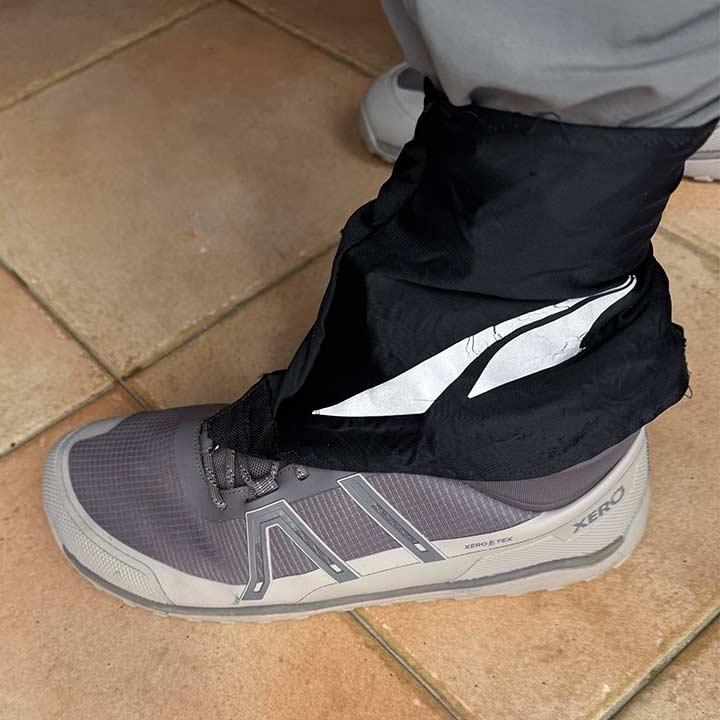

A big win for Xero is the built-in gaiter loop. It’s a super practical addition that lets you easily attach a trail gaiter, helping keep out debris and or rain. That’s a thoughtful feature pretty much exclusive to Xero shoes in the barefoot shoe space at the moment.
Aesthetics
Though they have the same blood as the benign-looking Xero Scrambler Low EV, they, in my opinion, look far better!
They appear like a quality mid-cut shoe. The barefoot silhouette is significantly improved as the side-profile has them appear as though they have a regular ‘stack-height’. Too the toe box is well-designed to visually reduce the clown-shoe aesthetic many barefoot shoes are known for.
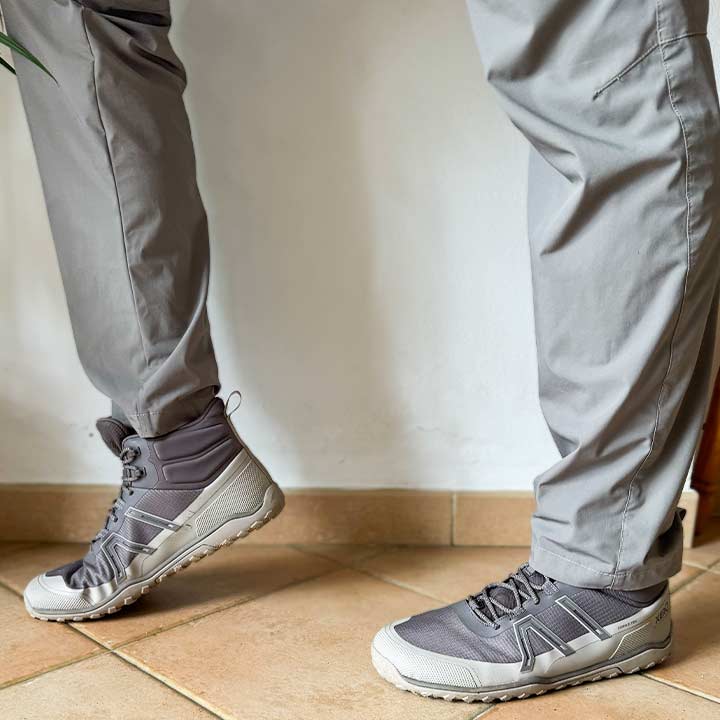

My very fashion-conscious housemate says these are well above average on the barefoot shoe aesthetics spectrum. With that being said, I think they still don’t look as nice as most of Vivobarefoots offerings, but they certainly pass way better than barefoot shoes have conventionally.
I am happy to wear these around town with my hiking apparel and they make for a nice look, but still, I wouldn’t go anywhere fancy with them on.
Conclusion
Overall I think they’re great! For mixed conditions in non-summer season, they’re ready for nasty trails and gross conditions. If I didn’t already have my Vivobarefoot offerings, then these would be absolutely satisfactory for my endeavours, but I personally prefer the hyper-flexible, lightweight, barefoot-sensation that the Vivo shoes give me.


However, if you do want more structure and rigidity than typical barefoot shoes, especially in the sole, than these are a fantastic choice. Especially for those transitioning to barefoot for the first time, I couldn’t recommend a better option.
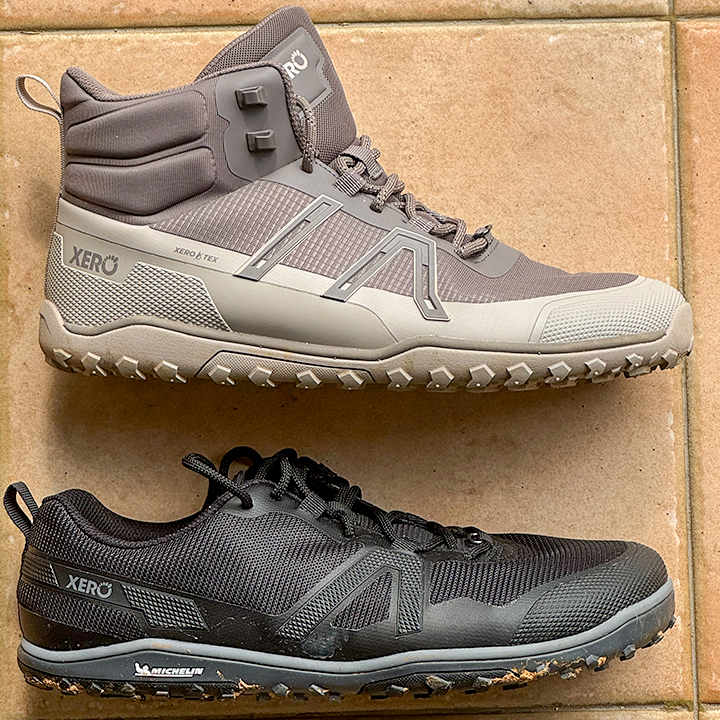

In the end, it’s a trade-off between durability, toughness, and grip versus agility, flexibility, and sleek design. The choice comes down to what matters most to you.
Read my complimentary Xero Scrambler Low EV review to see how that shoe compares.


Questions? Drop them down below and I’ll gladly answer. Peace!
Check out my ultimate Xero shoes buyers guide to help you compare models!
Related posts
Xero Scrambler Mid II WP
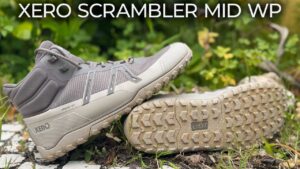

Waterproof, ultralight, barefoot hiking boot. Made for outdoor endeavours in mixed conditions.
Product Brand: Xero
4.5
Pros
- Waterproof
- Solid
- Aesthetics
Cons
- Stiffness
- Breathability

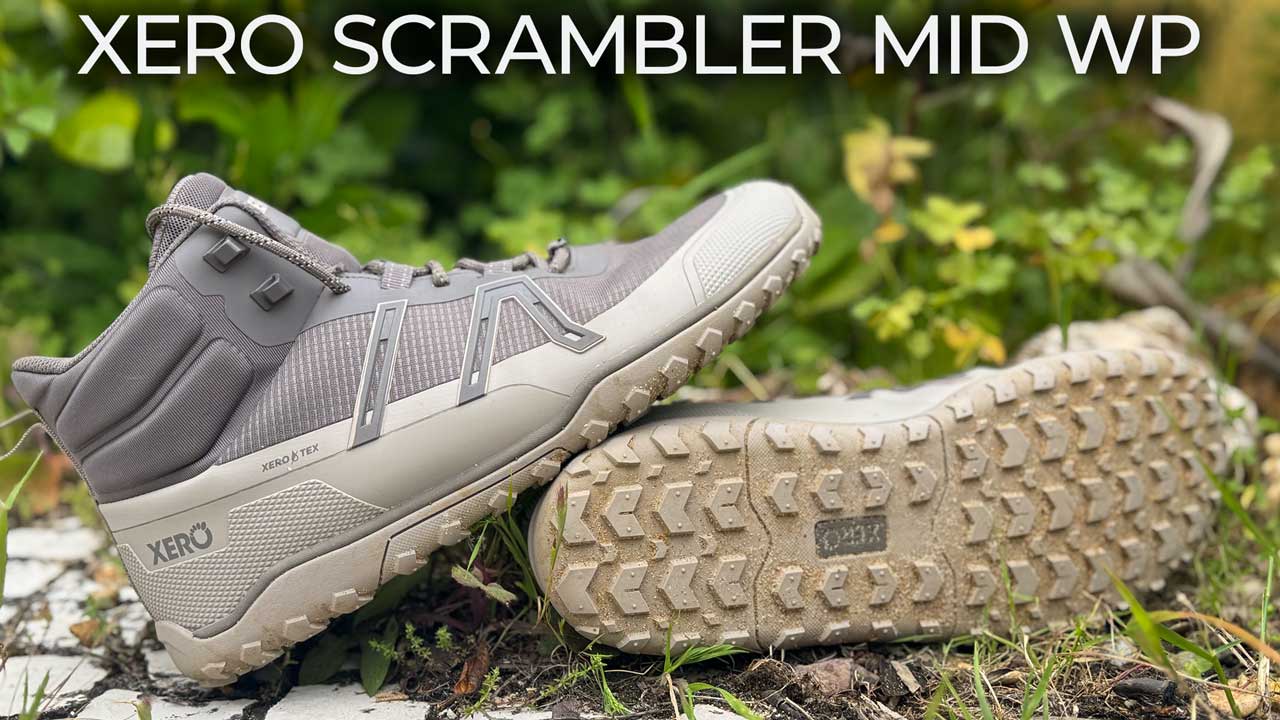
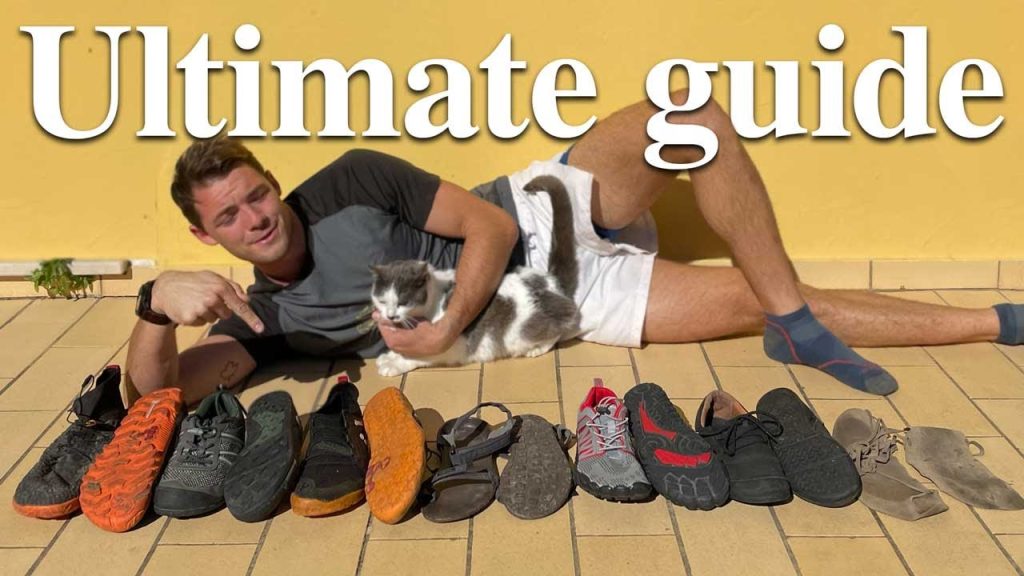

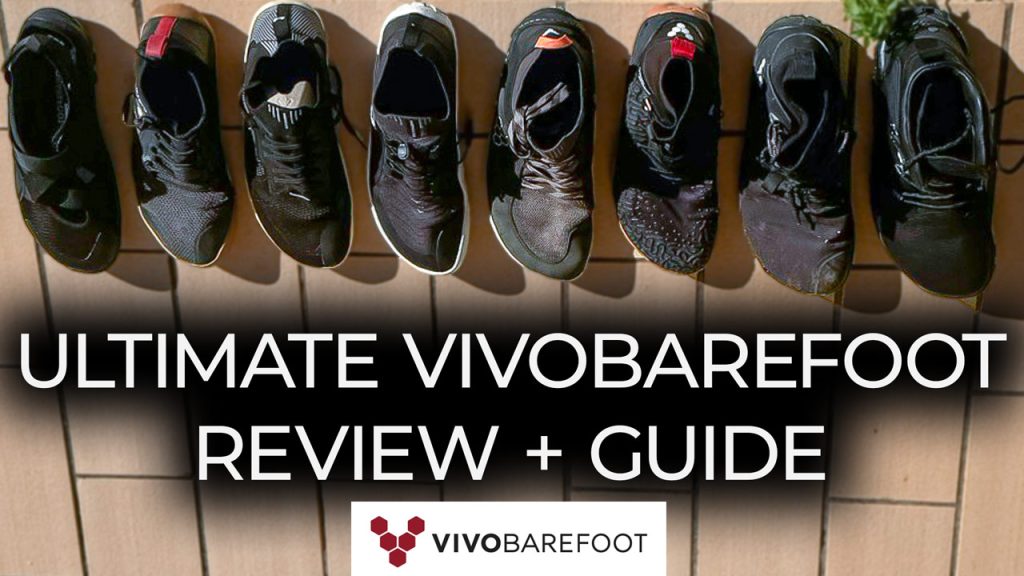
Any comment on the sizing? Does the numbers in the Xero size chart match you for length?